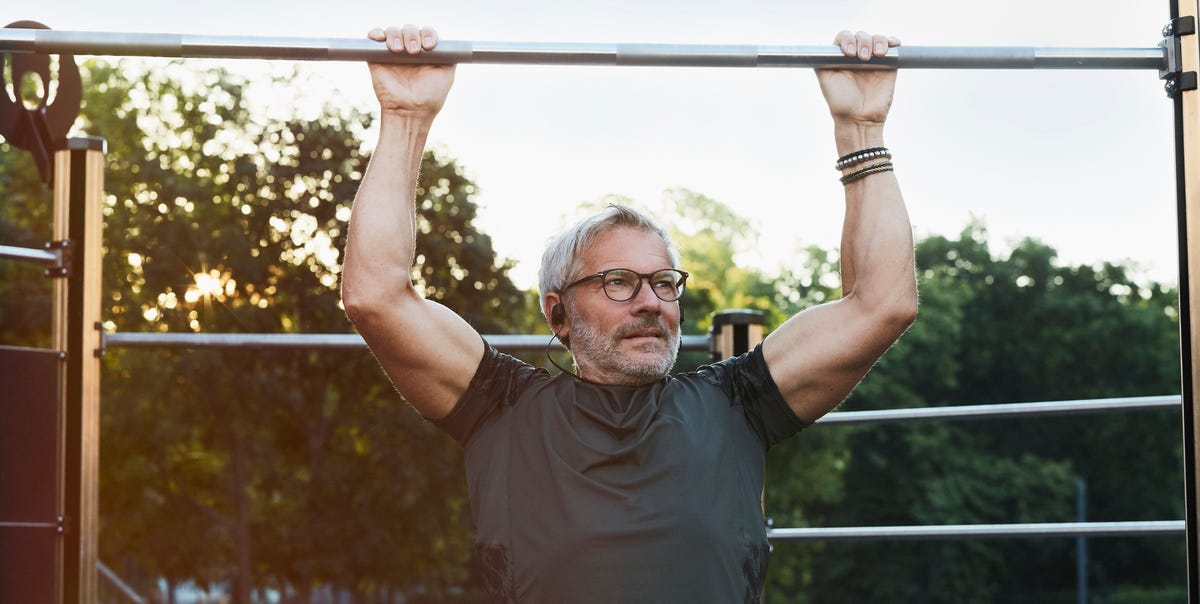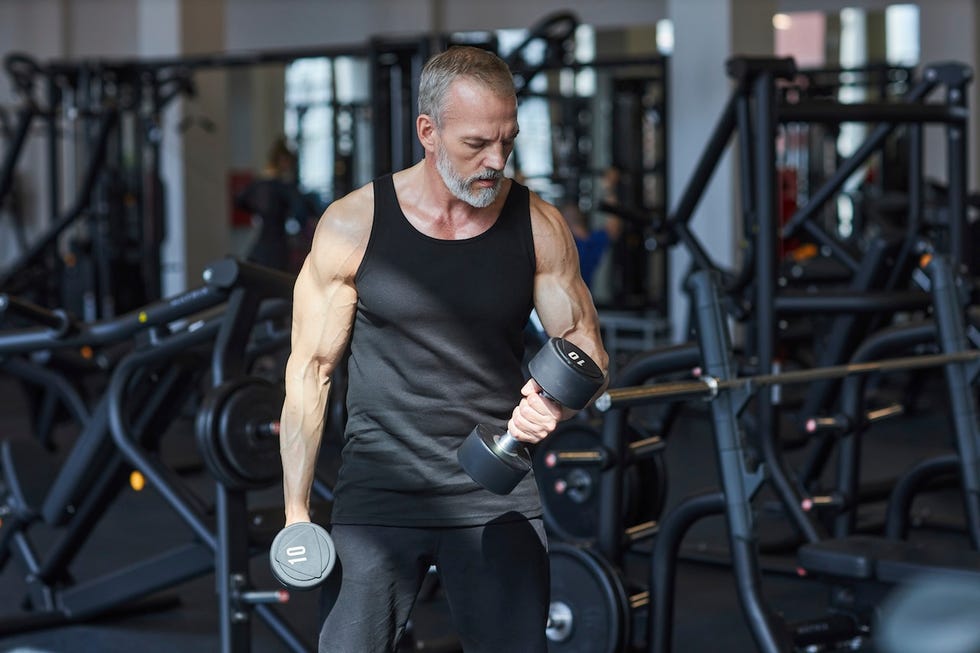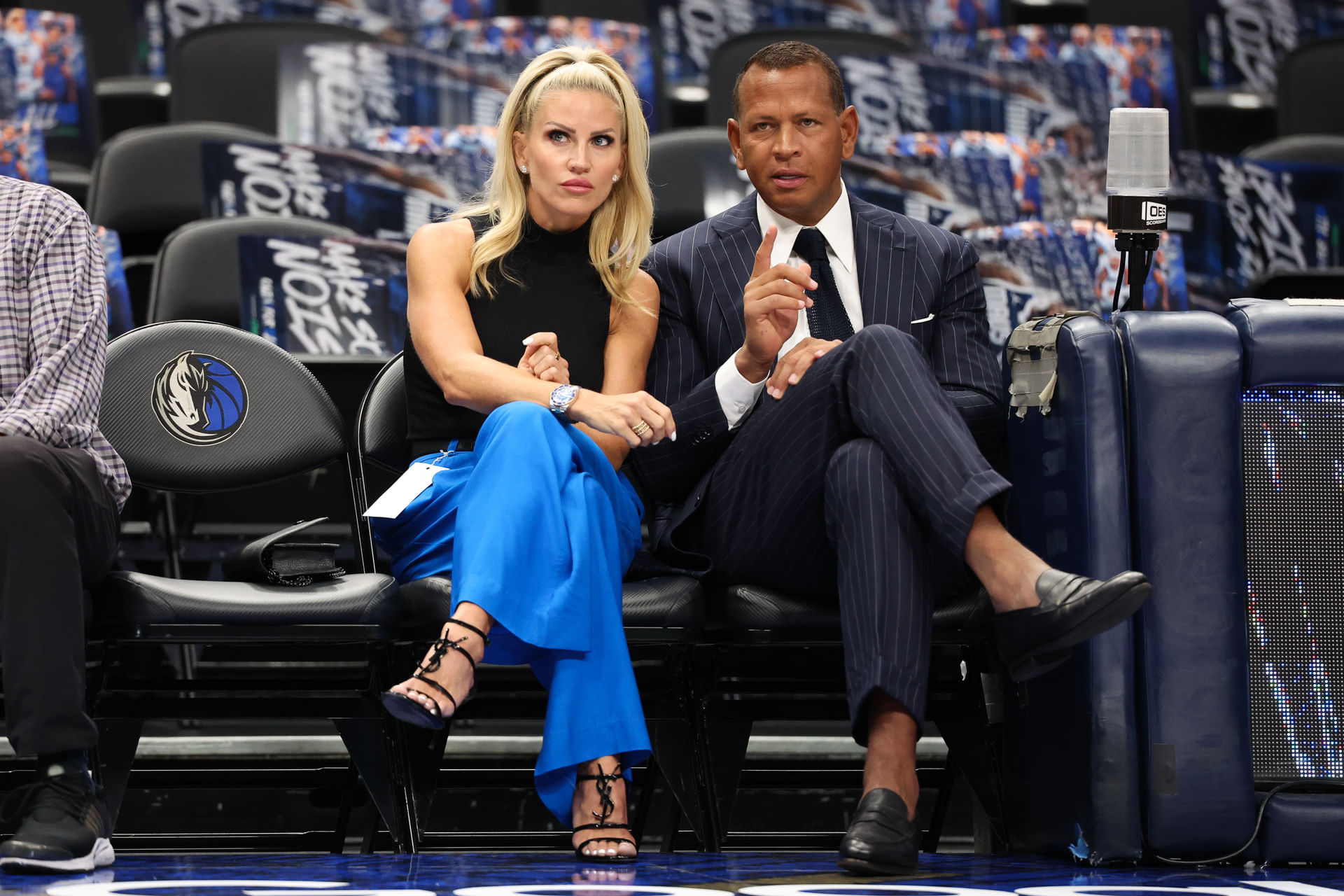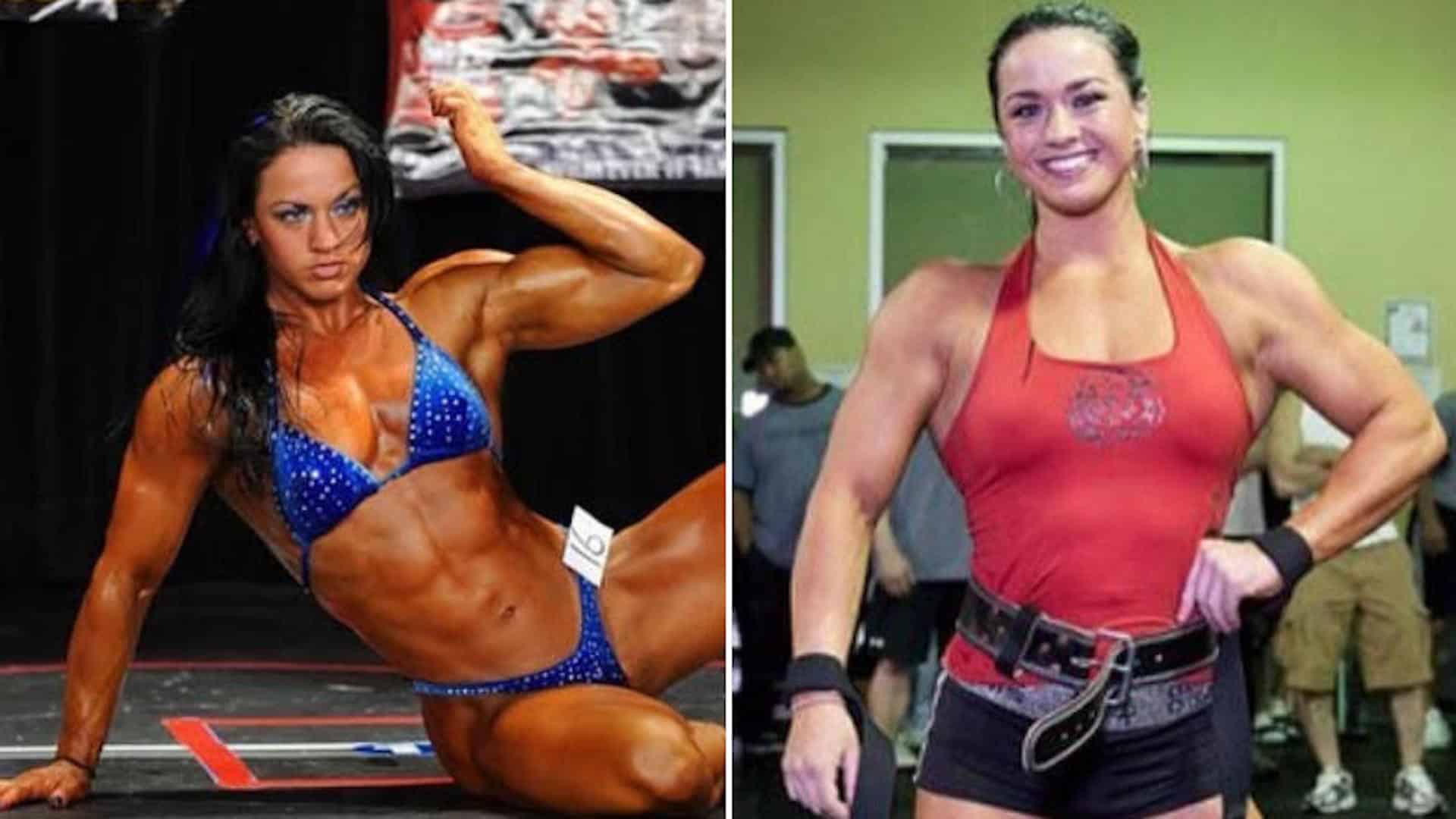It’s not uncommon to see specialist training plans aimed at over-60s, over-50s, and even – worryingly – aimed at those in their 40s and 30s.
But do you really need to completely switch up your approach to the gym once you hit half the century mark?
Short answer: no. Let us explain why.
What Really Happens to Your Muscles As You Age?
You’ve probably seen the statistic that muscle mass declines by as much as 3% to 5% per decade after the age of 30. There is truth to this. As we age, we lose motor units: nerves and the muscle fibres the nerves activate. Our muscles also develop anabolic resistance, meaning they become less sensitive to the benefits of both exercise and a high-protein re-feed. Both of these seem to be part of ageing, says Professor Stephen Harridge, head of the Centre for Human and Applied Physiological Sciences at King’s College London.
But just because your muscles aren’t as adaptable now as they were, it’s not game over. You may not gain muscle and strength as easily as you once did, but this doesn’t mean gains are off the table altogether. If you’re worried that your efforts in the gym are futile after 40, you needn’t be.
If you were a big gym guy in your youth, you’ll have muscle memory on your side. ‘As we train, we can increase the number of nuclei within our muscle cells,’ says Professor Harridge. These nuclei hang around even when our muscles cells shrink due to disuse. ‘This may confer an advantage to muscle adaptation down the line,’ he says.
In a 2019 study, scientists compared the muscle-building ability of masters athletes (lifelong exercisers in their seventies and eighties) against another similarly aged group of untrained participants. Researchers expected that masters athletes would outperform the newcomers, but at the end of the study, the untrained OAPs demonstrated an equal capacity to make gains.
Even if you’re not fussed by the aesthetic effects of training, it’s still worth focussing on the practical ones. ‘Strength training can help to maintain our ability to perform the tasks of everyday living,’ Think mowing the lawn, moving furniture or picking up your (grand)child. says Professor Harridge. ‘Muscle is also the biggest sink for glucose, and exercise is important in maintaining metabolic health and reducing the risk of diseases such as type 2 diabetes.’ That’s worth more than massive biceps, right?
Why the ‘Over-50s’ Training Plan is a Myth – and What To Do Instead
Why You Can Scrap The ‘Over-50s’ Training Plan
Change isn’t a bad thing. If your gut instinct is that it’s time to work out a little differently, then fine, try it. Maybe switching some of your training up is a smart idea. After all, there are plenty of factors that appear to correlate with ageing – including recurrent niggles and injuries, and slower recovery.
But these aren’t guaranteed, and if we let ‘adapting our training’ turn into a process of overhauling our entire approach to fitness, subsequently treating our bodies with kid gloves, we rob ourselves of potential progress. Ironically, this could even be increasing our risk of injury by not properly exposing ourselves to a broad range of movements, and lowering our durability.
If we shy away from certain exercises – such as lifting heavy loads straight from the floor – for fear of getting hurt, then find ourselves unexpectedly forced into those positions, injury could quickly become a self-fulfilling prophecy.
Our advice? Adapt when you need to adapt, not because of what it says on your birth certificate. Switch movements to more joint-friendly equivalents when you notice that niggles aren’t going away, lower your training volume when you notice you aren’t recovering as quickly, or lower the weights and go for higher reps when you notice your form breaks down more quickly under heavy loads. Just don’t do any of those things before you need to.
Why You Don’t Need to Train Easier, Just Smarter
‘Your ability to recover from exercise might start to be impaired between the ages of 30 and 40,’ says Kieran Turner, a Nuffield Health physiologist with a masters degree in strength, conditioning and rehabilitation. As we’ve already covered, this is linked to factors such as loss of muscle mass and bone density, but also to the demands of a busy lifestyle.
But Turner points to a 2021 study that indicated the biggest determinant of recovery duration is not age, but performance capacity. ‘A fit 50-year-old may recover quicker than a sedentary 30-year-old,’ he says.
More recently, a study found fit men in their 50s had similar levels of post-exercise muscle damage to men in their 20s.
All the usual rules apply: get quality sleep, eat ample protein, manage stress. But Turner’s key advice for mature athletes is to alter their approach to exercise so recovery is a little smoother. When striving for progress, he suggests prioritising exercise frequency, followed by duration, then intensity. Take goblet squats, for example. First, look for ways to increase your training time (could you add box squats to your weekly routine?); then explore adding extra sets or reps to your goblet squats; and finally, add a little weight.
‘As well as contributing to a reduced risk of injury, this method reduces the cumulative stress on joints that can occur with excessive intense training, and controls intracellular inflammation [swelling inside your muscle cells],’ says Turner.
5 Top Tips for Older Athletes
1. Make Activity a Way of Life
Your fitness is about more than just gym work. If you want to increase your activity levels without burning out, prioritise non-exercise movement such as walking, while adding low-impact activities such as cycling or yoga to your weekly routine. They’ll support recovery and help you keep tabs on weight gain.
2. Go Hard, Then Go Home
You may need to be slightly more mindful of overdoing it as you age, but that doesn’t mean you need to limit yourself to easy efforts. To make progress, train at a good intensity (lifting heavy weights that push you close to failure; performing short bursts of cardio that you can only sustain for 30 secs to 60 secs), and balance this with longer, more moderate-intensity efforts.
3. Don’t Dodge Dumbbells
Cardio is great, but maintaining muscle mass is crucial as you age. Data from NHS England suggests only 18% of men aged 65+ meet the minimum targets for strength work. Cowan suggests scheduling three strength sessions per week, focusing on compound movements (eg, squats and deadlifts) and core stability.
4. Protein, Protein, Protein
As we age, proper fuelling becomes even more critical for recovery and performance, says Cowan. For active men, she recommends a protein intake of 1.6g to 2g per kg of your weight (128g minimum for an 80kg man). High-fibre carbs and anti-inflammatory foods (such as fatty fish) will support you, too.
5. Don’t Be Afraid of Change
Your body might not look and perform the way it once did. That’s okay. If issues such as fatigue, muscle soreness or disrupted sleep persist, you might need to make modifications. And if that means reducing your workout frequency, dropping your weights or cutting your runs a little shorter, so be it.





